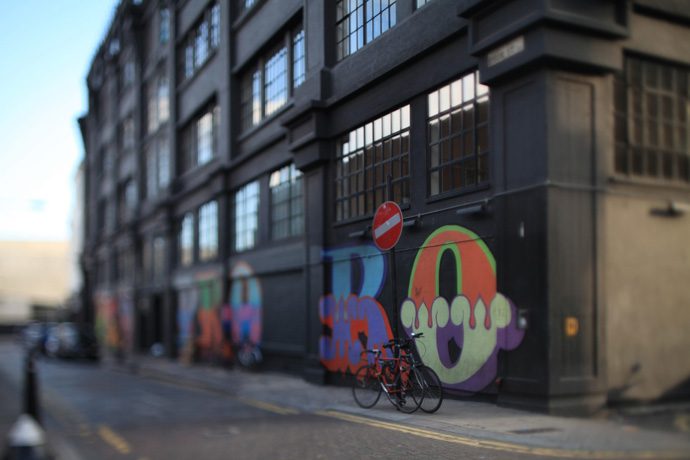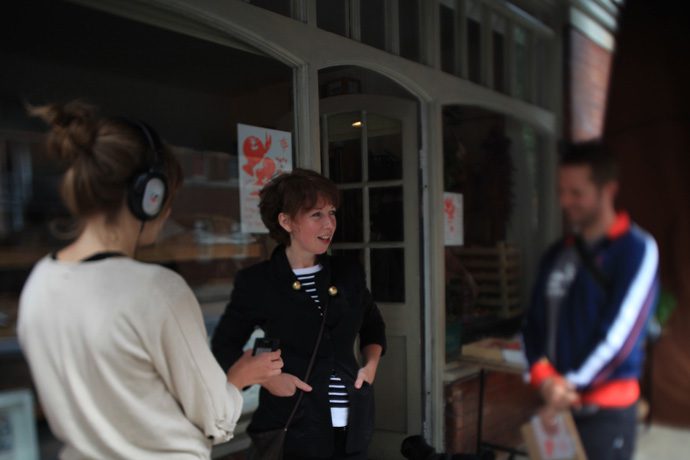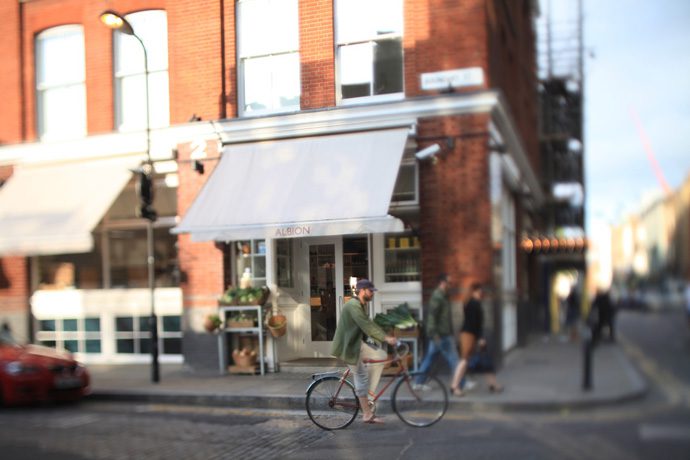Artist Shiraz Bayjoo collaborates with members of the public in an exhibition of film and photography discovering economy in Shoreditch through the eyes of the local people
On 19 -23 July Social Archive One: An Economic Forecast (Shoreditch) will show at Rivington Place. Artist Shiraz Bayjoo devised this project as part of Iniva’s 3 year project Art at the Intersection: Art & Economies. It harnesses the talents of the general public in the creation of short films interviewing those living in, working in and visiting the area and exploring its changing economy.
- Redchurch Street, photo by Shiraz Bayjoo
- Social Archive One workshop – photo by Shiraz Bayjoo
- Albion, Redchurch St, photo by Shiraz Bayjoo

Workforce poster, Shiraz Bayjoo
Shoreditch is known as the trendy hub of East London, but it was not always so. Once a largely green area and then a slum, run down and undesirable, Shoreditch was not the centre for creative industries it is now, attracting swathes of tourists, revellers and shoppers every weekend.
Teams of aspiring filmmakers and social archivists were guided by Bayjoo to create a series of short interviews teasing out opinions on subjects such as the decline of manufacturing, the gentrification of the area, to questions like: ‘Is Redchurch Street going to be the new Brick Lane?’ Business owners interviewed on film range from the recently opened design shops, vintage shops, cafes, passersby to car park owners and leather goods manufacturers who have been here since the 1970s.
Other work by Bayjoo with Iniva has included the Workforce project which transformed Rivington Place’s Education Space into a temporary artist-run factory, making it the setting for a new workforce in response to exhibitions by NS Harsha and Chen Chieh-jen.
Workforce recreated the collectivising demand of industry as governments call their workforce to mobilise and unite under a common cause, that of nation building. Continuing the legacy of union banners and other collective symbols such as the red flag, Bayjoo brought his workers together beneath the banner of his artistic product. 261 workers contributed over 1000 hours of free labour.


